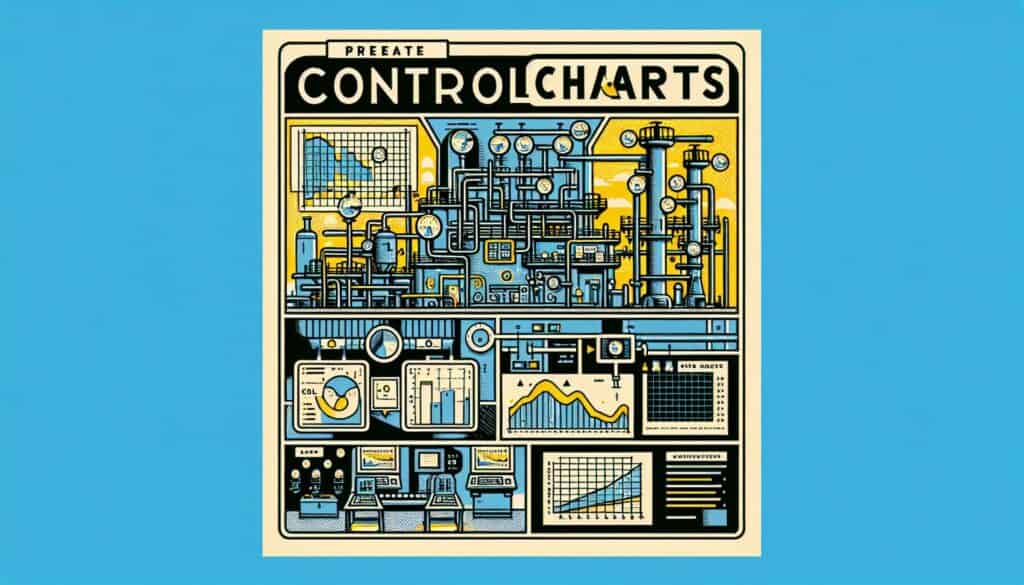Prévenir la production de produits non conformes en surveillant les paramètres du processus au démarrage et en cours de production, en utilisant des zones plus larges que les cartes de contrôle.
- Méthodologies : Ergonomie
Cartes de précontrôle

Cartes de précontrôle
- Amélioration continue, Prévention des erreurs, Production allégée, Capacité de traitement, Amélioration des processus, Efficacité de la production, Assurance qualité, Contrôle de qualité, Contrôle statistique des processus (CSP)
Objectif :
Comment il est utilisé :
- Un outil statistique simple dans lequel les opérateurs vérifient un petit nombre de pièces consécutives par rapport aux limites de spécification divisées en zones vertes (centre), jaunes (attention) et rouges (arrêt). Des ajustements sont effectués en fonction de la position des pièces.
Avantages
- Simple to understand and use by operators; Provides immediate feedback on process stability; Focuses on defect prevention rather than just detection; Requires less data collection than traditional SPC charts.
Inconvénients
- Moins rigoureuse sur le plan statistique que les cartes de contrôle de Shewhart ; ne permet pas de détecter aussi efficacement les petits changements de processus ; dépend fortement de la discipline de l'opérateur et d'une interprétation correcte.
Catégories :
- Fabrication, Qualité
Idéal pour :
- Providing a simple, operator-driven method for contrôle de processus at the point of manufacture, particularly useful for short runs or where full SPC is impractical.
Pre-Control Charts serve as an effective tool for quality management and can be particularly advantageous in industries such as automotive, electronics, textiles, and food processing, where production often involves a significant number of distinct parts produced in short runs. This methodology is often utilized during the manufacturing phase, particularly in environments where rapid adjustments are necessary due to fluctuations in production or when implementing new processes. Operators and front-line workers, who are familiar with the production intricacies, typically initiate this approach, allowing for prompt decision-making based on real-time data. The simplicity of Pre-Control Charts makes them accessible for users without advanced statistical training, providing immediate visual cues through a straightforward color-coded system that delineates acceptable and unacceptable performance. This enables teams to engage more actively in the monitoring process, fostering a culture of defect prevention rather than merely waiting for issues to be identified through more extensive contrôle statistique des processus (SPC) mechanisms. Since the methodology requires less rigorous data collection, it allows companies to allocate resources efficiently, minimizing downtime and increasing responsiveness to quality issues. Furthermore, firms may find that integrating Pre-Control Charts into their workflows not only improves process reliability but also enhances the overall skill set of their workforce, empowering operators to take ownership of quality outcomes while effectively collaborating across departments for continuous improvement initiatives.
Principales étapes de cette méthodologie
- Define the specification limits for the product.
- Determine the number of consecutive parts to be checked.
- Inspect each part against the defined limits.
- Classify the results into green, yellow, or red zones based on specifications.
- Implement immediate adjustments if parts fall into yellow or red zones.
- Continue monitoring the process and inspecting subsequent parts.
Conseils de pro
- Ensure clear criteria for green, yellow, and red zones, involving operators in the definition process to enhance ownership.
- Implement regular training on reading and interpreting Pre-Control Charts to maintain operator engagement and competence.
- Utilize historical data to set realistic specification limits, allowing for continuous adjustments based on verified performance trends.
Lire et comparer plusieurs méthodologies, nous recommandons le
> Référentiel méthodologique étendu <
ainsi que plus de 400 autres méthodologies.
Vos commentaires sur cette méthodologie ou des informations supplémentaires sont les bienvenus sur le site web de la Commission européenne. section des commentaires ci-dessous ↓ , ainsi que toute idée ou lien en rapport avec l'ingénierie.
Contexte historique
1962
1970
1972
1980
1980
1986
1986
1960
1963
1970
1980
1980
1980
1986
1987
(si la date est inconnue ou n'est pas pertinente, par exemple "mécanique des fluides", une estimation arrondie de son émergence notable est fournie)















Articles Similaires
Calculateur de METS en calories
Méta-analyse
Cartographie des messages
Diagrammes du modèle mental
Forces de poussée et de traction maximales acceptables
Planification des besoins en matériaux (MRP)